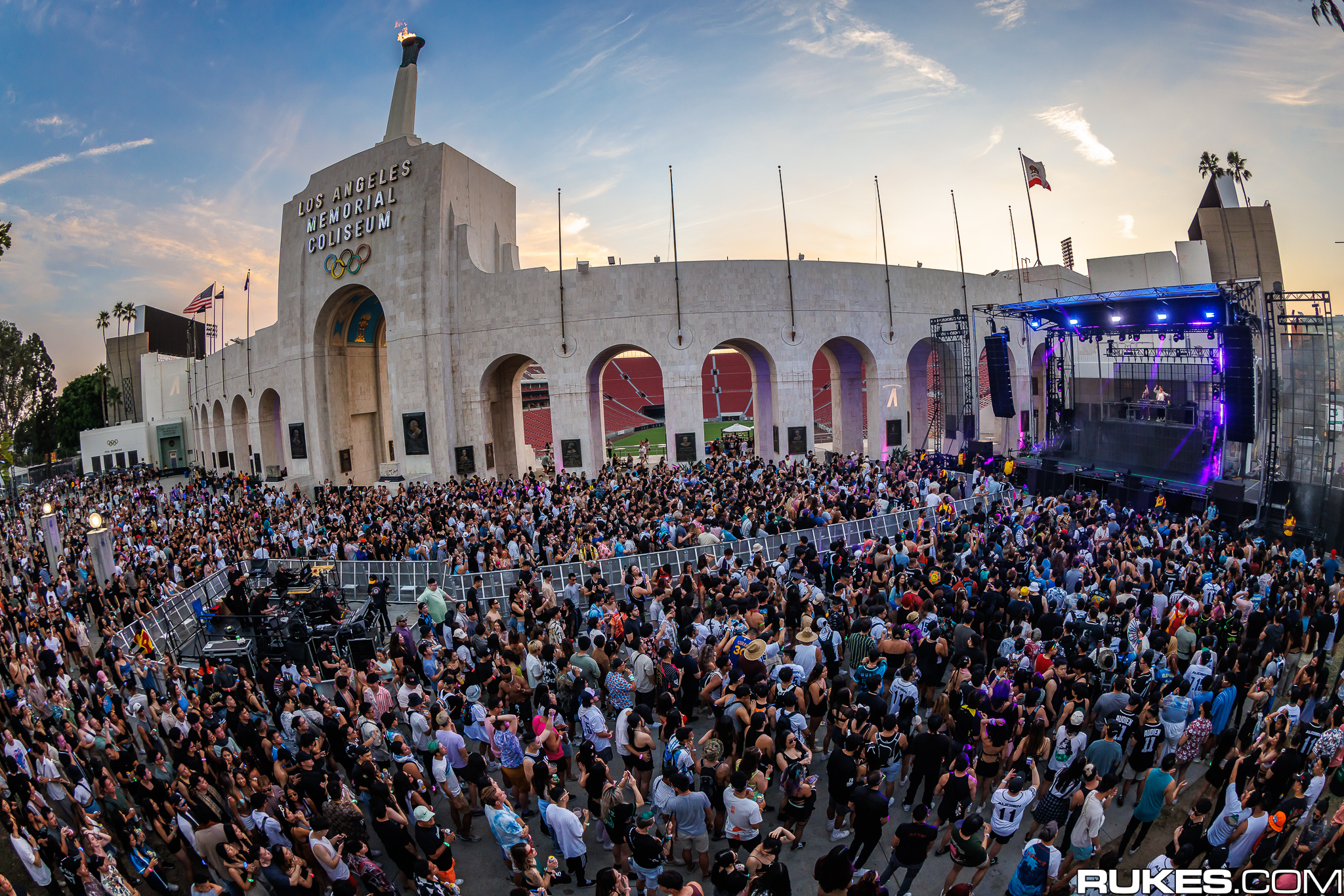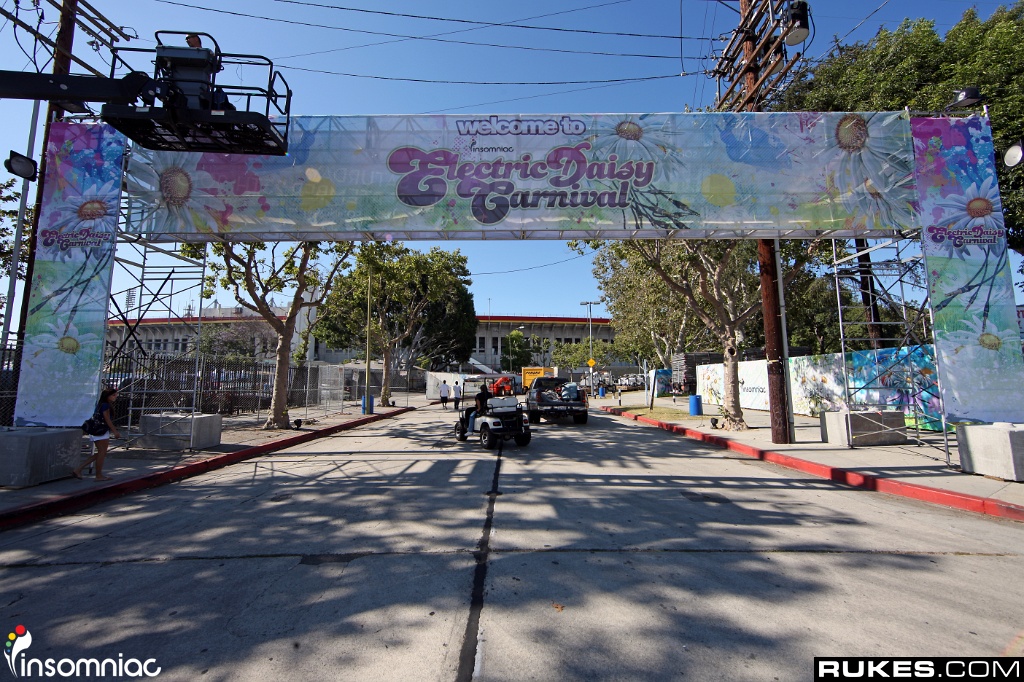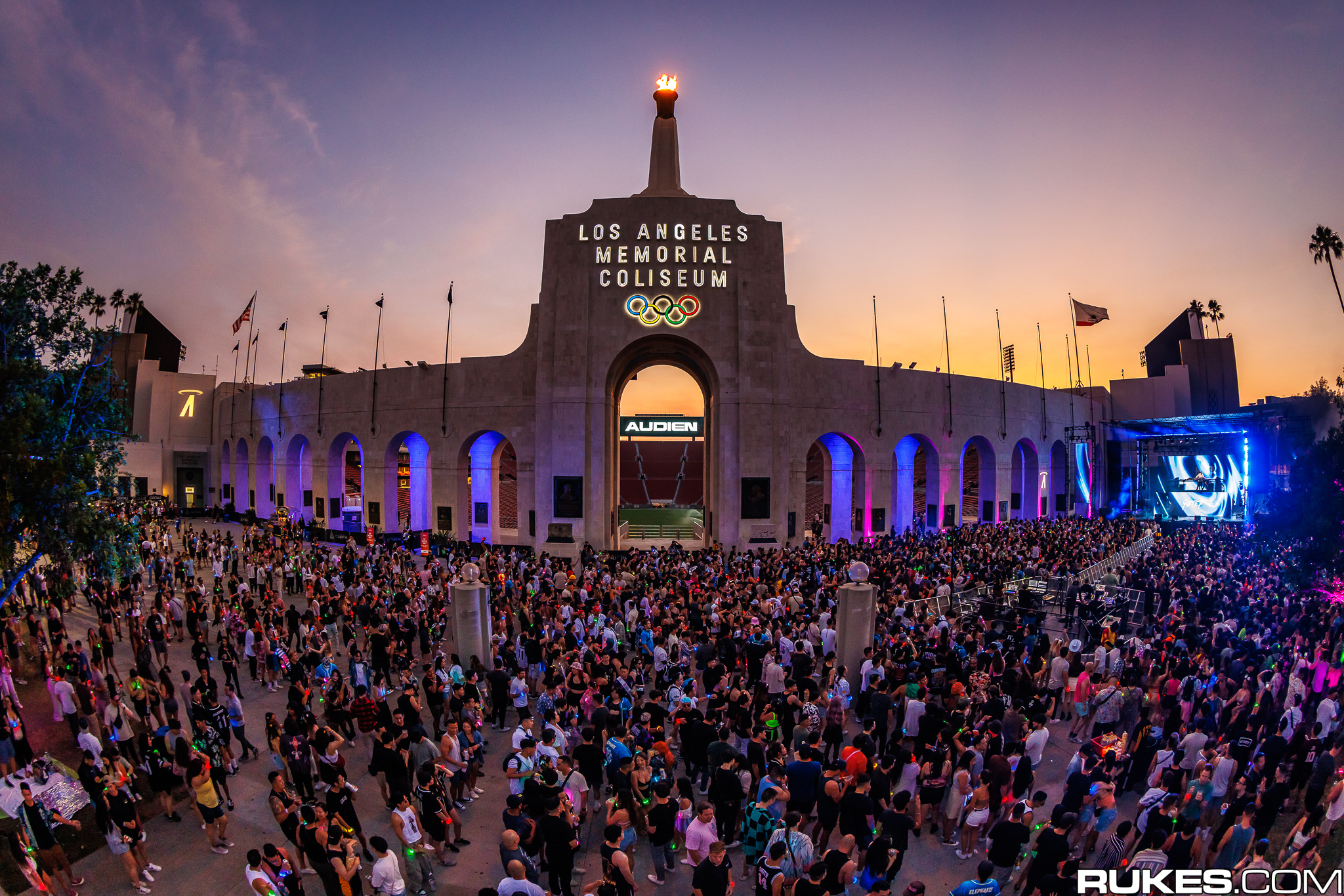The year is 2011. I’m at the Natural History Museum in LA for a field trip during my sophomore year of high school, and I’m staring at this old ruin.
A ruin that has a significant history in the city where I was born. A ruin with the words “Los Angeles Memorial Coliseum” displayed in massive letters on the front.
As I stared at this historic building, which had been mostly deserted at that point, I was unknowingly combining two pieces of history as I was simultaneously listening to “I Remember” by Kaskade and deadmau5 on my iPod shuffle because a boy I liked said it was his favorite.
I had no idea standing there, discovering dance music for one of the first times in my life, that I had just missed a pivotal time in dance music history: the LA Coliseum hosting their last raver mecca, EDC, in Los Angeles.
Growing up, many of my peers and I had been deprived of the dance music culture that apparently used to thrive in LA. Gone were the days of massives, raves, and underground events, swept away in the anti-rave sentiments that followed EDC 2010.
When an alumnus from my middle school who is now known as Skrillex made a remix for a fun song called “Cinema,” it spread through my high school like wildfire. I thought to myself after hearing it ad nauseam, “I’ve never heard this kind of music in LA.”
By the time LA youngsters like me began to develop our own tastes alongside the desire to rebel and focus on individuality, the dance music scene had been snuffed out.
So when the news dropped that Insomniac would be returning to the Los Angeles Coliseum for the first time in over ten years with HARD Summer, it was a big deal.
While many ravers simply felt an internationally iconic venue was returning to its roots, LA natives felt a rush of emotion flood back: the nostalgia from their first events; the excitement to have a massive back in their hometown; and trepidation as this meant all eyes would be back on their city.
But the historical significance of HARD Summer heading back to the Coliseum cannot be overstated as it represents more than just an electronic festival returning to LA, but of a city once so opposed to their culture finally reaccepting the community that used to call it home.
EDC 2010: Tragedy & Ecstasy
Almost one year before my field trip to the museum, in June of 2010, EDC’s 13th edition was set to make waves once again at the LA Coliseum.
Local and international ravers alike flocked to the electronic music haven to see artists like Afrojack, A-Trak, Dada Life, Avicii (RIP), Swedish House Mafia, and more and to connect with other outcasts where Peace, Love, Unity, and Respect flourished.
2010 was when many of us millennial/Gen Z ravers discovered dance music. Kaskade’s Dynasty, Skrillex’s Scary Monsters & Nice Sprites EP, and David Guetta’s “Memories” were the soundtracks to our EDM-fueled childhoods that culminated in the Los Angeles mecca that was EDC 2010.
And this could be felt in every aspect of the landmark festival.
We spoke with Interstellar performing artist and longtime dance music veteran, Anakim, real name Riccardo LeBron, about that very fateful EDC, who said, “Back then… it was the purest love energy I’ve ever felt in my life. And that’s really what attracted me to the culture and to the scene…Some of the people that I’ve met back then are still my friends today.”
LeBron says the love, culture, and music at EDC 2010 really kicked off his connection to the music and the scene, eventually inspiring him to become a DJ after experiencing a sea of people on the same wavelength and feeling the same energy.
But despite this overwhelming love, not everything about EDC 2010 could be perfect. Videos began to surface showing crowds surging toward the field after the main stage was shut down due to weather issues.
LeBron said about the scary moment, “I was literally ten feet away from them and I remember they were all jumping over the fence. There was this one area right next to the staircase off the side of the bleachers where there was a big bottleneck funnel and all the kids were getting crushed. I remember those images very vividly.”
An even more harrowing tragedy struck after a 15-year-old girl died from drug-related complications that same night, sending the community into chaos and government officials into action.
EDC 2010 was 16+, so IDs and age verification were extremely difficult to enact, and from there, the impression of raves in Los Angeles was akin to riots. Wild. Out of control. And most of all, dangerous.
In 2010, government official Fiona Ma proposed an “anti raves act” which would ban raves from publicly owned venues, citing, “Raves foster an environment that threatens the health and safety of our youth. The introduction of AB 74 is the first step toward eliminating these dangerous events. Raves are a statewide problem and require a statewide approach. It’s time that the Legislature says enough is enough and (provides) law enforcement with the tools to shut down events that have displayed a pattern of fostering youth drug use.”
The Coliseum immediately enacted a temporary ban on new contracts with rave organizers, and while the ban was quietly lifted a few months later, there had not been any major EDM events at the same scale as EDC 2010 since.
LA was once a thriving center for raves, massives, and electronic music but major festivals from Insomniac and other promoters were forced to move to other regions like San Bernardino or Las Vegas.
More Order, More Mainstream, But Still Elusive
The loss of EDC from Los Angeles shook the rave community and left many without a place to call home. But the dance music wave that had taken hold of so many outcasts was growing into a tsunami that would soon take over the mainstream airwaves.
Those ravers who had their passions sparked by Kaskade, Skrillex, and David Guetta quickly became obsessed as 2011 was the year that many names still on the top of the EDM charts today began to take control of mainstream music.
Calvin Harris‘ “Sweet Nothing” and “Feel So Close” alongside “Levels” by Avicii turned “electronic music” into “EDM,” a term that picked up speed and was racing through the music industry.
“I think the overall shift was that it just became more and more mainstream. A lot of the fratty guys who were super anti-rave that we went to school with, suddenly we’d be walking in a rave and they’d be like, ‘Oh, what’s up?’ And if all of these kids that we knew to be super anti-anything dance music are now front and center at main stage, we thought this was going to be something bigger than we could ever imagine,” LeBron says.
Around 2013, Live Nation, the world’s largest concert promoter, bought a 50% stake in Insomniac, the company behind EDC. They added a sense of legitimacy to the once old-school rave company and turned it into a trustworthy, full-time business.
And with this partnership, Insomniac was able to expand its festivals and highlight dance music in a way that breathed life back into the scene, with Nocturnal Wonderland, Beyond Wonderland, their acquisition of HARD Events, and new events on the East Coast, the Midwest and eventually an expansion into Europe, Asia, and South America.
But once again, Los Angeles was a dance music desert.
In 2013, I had just turned 18 and a friend of mine who was a bit older than me was talking about going to Electric Daisy Carnival. The lineup looked incredible but how could I convince my parents to help pay for a trip alone as a barely adult to attend a multi-day concert in sin city?
EDM-forward concerts at the Coliseum became scarce after 2010 when tragedy struck, and there was a large gap in concerts overall between 2018 and 2021 for huge renovations of the venue built in 1923.
Until 2021…
Embraced & Supported
Around 2021, a new resurgence of electronic music at the Coliseum began. Sofi Tukker and LP Giobbi played shows in 2021 before huge players like Framework brought The Martinez Brothers to the torch in front of the Coliseum.
At the end of 2022 Kx5, the collaborative project from deadmau5 and Kaskade, played, according to Pollstar, “the largest single-day concert headlined by an electronic music artist ever in North America” at the Coliseum.
I remember reading about the Framework show and thinking, “Oh ya, the Coliseum used to be a venue.” My LA peers and I had never seen the Coliseum in its glory days, been to an event there, or even been allowed to step foot inside during our school field trips.
And finally, during the 100th anniversary of The Coliseum, HARD Summer announced its return.
Teresa Guy, Director of Booking and Partnerships at USC, the owners of The LA Coliseum, explained the shift in attitude towards the genre:
“There’s definitely been an evolution of electronic dance music in the last 10 to 13 years. I would say that a decade ago it was still probably an underground movement and something that you would see in warehouses and in clubs. Now at this point, dance music is popular music.”
The decision to bring back HARD, according to Guy, was a call back to the glory era of dance music in LA, meant to instill nostalgia for those who longed to return to its inaugural edition in 2007.
The LA community sees this as an opportunity for dance music to return to the city it was once shunned from. LeBron said, “I feel like there’s this whole generation that grew up not having anything in their own hometown. There’s this huge culture of not only dance music veterans but also people who are just discovering dance music that I think really need some sort of a massive in Los Angeles to call home again.”
But this time, festivals are not as free and unpoliced as they once were. They’re a serious business. Guy elaborated that “the Insomniac of a decade ago isn’t the Insomniac of today” with the new HARD Summer working with security, LAPD, medical teams, and more to make sure that safety is the top priority.
And for the future of dance music, artists, fans, and organizers only see it growing as Flume, Subtronics, and Kazyo headline arenas in LA like the Kia Forum, SLANDER sells 22,500 tickets in less than two hours as the only music act ever to do two shows at the LA Convention Center, and festivals become more and more common for the everyday music fan.
As someone who grew up in LA without any big electronic events in my backyard, seeing the once-empty Coliseum as more than just a part of the Science Center and Natural History Museum while heading back to its glory days with the genre I love, I feel more connected than ever with the city I called home for so long.
HARD Summer takes place August 5-6, 2023 at the LA Coliseum and BMO Stadium. Tickets are completely sold out.
All images provided by Rukes.










